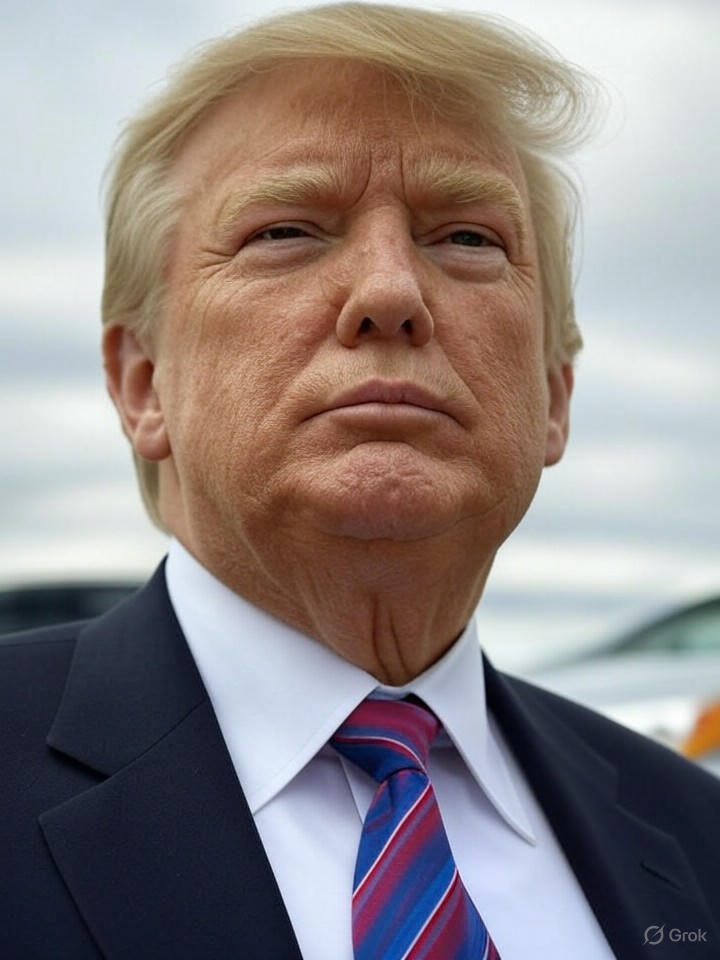As President Donald Trump’s tariff policies continue to reshape global trade, the automotive industry finds itself at the epicenter of economic turbulence. Major automakers are now quantifying the financial toll, with recent earnings reports revealing staggering costs that could redefine production strategies and consumer prices. Stellantis, the parent company of Jeep and Ram, disclosed in its latest earnings call that Trump’s tariffs on imported vehicles are projected to cost the firm around €1.2 billion ($1.4 billion) in the second half of 2025, following a €300 million hit in the first half, as reported by Business Insider. This comes amid broader industry warnings that such duties are disrupting supply chains and inflating costs for parts sourced from abroad.
General Motors echoed these concerns, estimating that the tariffs could erode between $4 billion and $5 billion from its bottom line by year’s end, according to posts on X from industry analysts. Ford, too, has signaled potential price hikes to offset these burdens, highlighting how even domestic giants are not immune, given their reliance on international components like steel and electronics.
Uneven Tariff Relief and Competitive Strains
The administration’s approach has been inconsistent, offering some reprieve to certain trading partners while imposing heavier burdens on others. For instance, a recent deal with Japan caps tariffs on Japanese vehicles at 15%, providing a measure of relief to firms like Toyota and Nissan, as detailed in a CNBC report. However, this has sparked backlash from U.S. automakers, who argue it creates an uneven playing field. The Big Three—GM, Ford, and Stellantis—contend that they face steeper import taxes on materials like steel and aluminum compared to their Japanese rivals, potentially putting them at a competitive disadvantage, per insights from PBS News.
Industry experts caution that this disparity could accelerate shifts in market share, with foreign automakers potentially undercutting prices on U.S. soil. Posts on X from economic commentators, such as those estimating a $3,000 average increase in car prices due to tariffs on Canada and Mexico, underscore the ripple effects on consumers and dealers.
Supply Chain Disruptions and Strategic Shifts
Automakers are responding with a mix of production adjustments and lobbying efforts. Reuters noted in April that Trump’s team plans to soften some duties on foreign parts used in U.S.-made vehicles, aiming to mitigate the stacking of tariffs, as outlined in their article on industry pushback. Yet, the broader trade war’s impact remains profound; a Tax Foundation analysis projects an average $1,300 tax increase per U.S. household in 2025, with the auto sector bearing a significant portion, according to their research on the economic fallout.
Companies like Subaru have issued dealer bulletins warning of pricing uncertainties, particularly with 25% tariffs looming on Canadian and Mexican imports, as reported by National Post. This has prompted some firms to explore onshoring more assembly, though experts warn that such moves could take years and billions in investment.
Broader Economic Ramifications and Job Concerns
The tariffs’ reach extends beyond balance sheets, threatening employment in an industry already navigating electrification and supply shortages. A study cited in X posts suggests the auto sector could face up to $108 billion in added costs industry-wide in 2025, potentially leading to reduced sales and job losses. Economists, including those referenced in a MotorTrend overview, predict a net negative on jobs, with up to 700,000 fewer car sales due to higher prices.
White House fact sheets from March justify these measures under national security pretexts, invoking Section 232 to counter unfair trade practices, as detailed in their official release. However, critics argue this overlooks the integrated nature of North American supply chains, where a single vehicle might cross borders multiple times during production.
Looking Ahead: Adaptation and Uncertainty
As the year progresses, automakers are bracing for further volatility, with some forecasting price increases of $2,500 to $5,000 per vehicle, especially for luxury models, based on X discussions from economic observers. The intensifying competition from China, despite targeted tariffs, adds another layer of complexity, as noted in recent Digital Journal analysis.
For industry insiders, the path forward involves not just absorbing costs but innovating around them—perhaps through partnerships or technological efficiencies. Yet, with tariffs showing no signs of abating, the automotive sector’s resilience will be tested, potentially reshaping global manufacturing dynamics for years to come.




 WebProNews is an iEntry Publication
WebProNews is an iEntry Publication